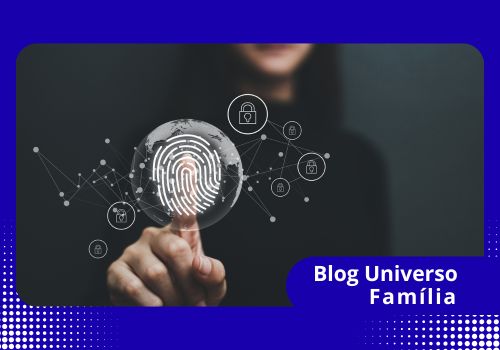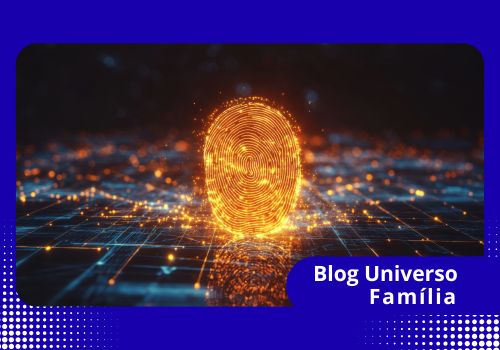Ads
Complete guide to strong passwords and biometrics: two essential concepts that determine each person's level of digital protection today.

In 2025, when virtually all of life is spent on screens and online platforms, security is not a luxury, but a vital necessity.
From your social media accounts to mobile banking, your identity depends on how well you protect access to your accounts.
In this guide, you'll learn how to create strong passwords, why biometric authentication has become so popular, and how to combine both strategies to protect your personal data.
Summary of what you will find on strong passwords and biometric authentication:
Ads
- What makes a password truly secure.
- How biometric authentication transforms digital protection.
- Common mistakes when managing passwords.
- Real examples of good practices.
- Recommendations from cybersecurity experts.
Have you ever considered how vulnerable your digital life would be if someone discovered even one of your passwords?
The new era of digital security
In recent years, cybersecurity has become a global concern.
According to the report of Cybersecurity Ventures (2024), cybercrimes will generate losses of more than $10.5 trillion annually by 2025.
A figure that reflects the magnitude of the problem and the urgency of adopting safer habits.
Weak passwords remain the most common gateway for attacks.
However, the combination of secure passwords with biometric authentication is marking a before and after in user protection.
What makes a password secure?
A strong password is not only defined by its length, but by its complexity and uniqueness.
Strong passwords should include uppercase and lowercase letters, numbers, and symbols.
Furthermore, it is essential that they are not related to obvious personal data, such as birth dates or family names.
According to the UK National Cyber Security Centre (NCSC), millions of people still use passwords like “123456” or “password,” which shows how little they are aware of the risk this entails.
A common mistake is using the same password on multiple platforms. If one is leaked, all accounts are exposed.
Therefore, experts recommend using password managers, tools that store all your keys in encrypted form and generate secure and unique combinations.
Example 1: Think of a password manager as a digital ATM: you only need to remember one master key, while the tool securely manages the rest.
How to create secure passwords and remember them without the hassle
An effective method is the technique “random phrase”. Instead of a word, use an unusual sentence or combination, such as “CaféAzul_27LunaSonriente”It's easy to remember, but difficult for attackers to crack.
Another practical tip is to change your passwords every three to six months and activate security alerts on services that allow them.
| Security level | Characteristics | Approximate example |
|---|---|---|
| Low | Simple words or personal data | “juan123” |
| Half | Mix of letters and numbers | “Jm2024sol” |
| High | Phrases, symbols and randomness | “Light#Muntain!45Eco” |

Read more: Digital Safety: Protect Your Family from Online Scams
Biometric authentication: the future is here
Biometric authentication uses physical or behavioral traits—such as fingerprints, facial recognition, or voice—to verify a person's identity.
This method has gained strength due to its convenience and precision.
Companies like Apple, Samsung, and Google have integrated biometric systems into their devices, and today, most Mexican banks allow access to their apps using fingerprints or facial recognition.
The main advantage is that you can't "forget" your fingerprintHowever, that also raises questions about privacy.
Biometric data should be stored locally and encrypted, not in the cloud, to prevent data leaks.
Example 2: Imagine your biometric data as a key carved in stone: unique and unrepeatable, but impossible to change if it falls into the wrong hands.
That's why protecting your storage is just as important as the system itself.
Passwords vs. biometric authentication: competition or complement?
Although many believe that biometrics will completely replace passwords, the reality is different. Both methods they complement each other.
Biometrics provide speed and convenience, while passwords offer an additional level of security, especially when combined with two-factor authentication (2FA).
For example, unlocking a device with a fingerprint and then confirming a transaction with a dynamic password generates a double filter which makes unauthorized access difficult.
This synergy, known as multi-factor authentication, is today the most recommended strategy by organizations such as the European Union Agency for Cybersecurity (ENISA).
Mistakes that compromise security without you realizing it
- Use identical passwords on social networks, email and digital banking.
- Save passwords in notes or photos on your cell phone.
- Accept automatic access without reviewing privacy settings.
- Share devices without signing out.
These small oversights are what cybercriminals take advantage of to infiltrate.
The good news is that all of these are easily avoidable with digital education and consistent habits.
How to apply biometrics in your daily life
You don't have to be a tech expert to benefit from biometric authentication. Today, it's accessible and widely compatible across multiple devices.
- Smartphones: Use the fingerprint reader or facial recognition to unlock and authorize payments.
- Banking applications: set biometrics as the primary access method.
- Personal computers: enable secure fingerprint or PIN login.
Additionally, companies that handle sensitive data—such as hospitals or educational institutions—are implementing biometric controls to ensure that only authorized personnel access confidential information.
An analogy that explains everything
Think of your digital security like a house. Passwords are the locks on your doors, while biometrics are the facial recognition of the doorman who lets you in.
When the two work together, the result is a fortress that is difficult to breach.
Digital trust: the foundation of security in 2025
People want to live connected lives without fear. Therefore, the current challenge is not only technical, but also emotional: generating digital trust.
Knowing your data is protected lets you enjoy technology with peace of mind.
In Mexico, institutions such as the Cyber Police They promote educational campaigns to prevent fraud and improve the family cybersecurity culture.
A safer digital environment starts at home, with knowledge and responsibility.
Frequently Asked Questions on strong passwords and biometric authentication
Is it possible for biometric authentication to fail?
Yes. Factors such as cuts in the skin, low lighting, or physical changes can interfere.
However, modern systems include secure backup alternatives, such as PINs or passwords.
What happens if a cybercriminal steals my biometric data?
Although risks exist, current technologies store this data encrypted on secure chips within the device, not on external servers.
Therefore, it is recommended to keep the operating system updated.
Will passwords disappear in the future?
Probably not. The trend is to combine them with biometric methods and security tokens, creating more robust systems rather than replacing them entirely.
Should children use biometric authentication?
It depends on the age and the device. Some experts advise limiting use to basic functions and supervised by adults, especially on social media or school apps.
Read more: How to find cheap flights to Europe
Conclusion: Safety starts with you
The Complete guide to strong passwords and biometric authentication It shows that digital security does not depend on a single method, but on a culture preventive.
Combining strong passwords with biometric authentication is undoubtedly the best defense against an increasingly digital world.
Proteger tus datos no se trata solo de tecnología, sino de responsabilidad.
Every click, every login, and every new account you create is a potential door. The key is deciding how well you want to close it.
And you, have you already taken the step towards smarter digital security? on secure passwords and biometrics?